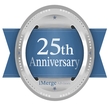What Companies Look for When Acquiring Software or SaaS Businesses
Investment companies, particularly private equity groups (PEGs), evaluate many data points of an acquisition candidate before making an acquisition, especially for businesses with less than $10M in revenue. Software business owners often ask, after they decide to sell their business, what criteria these business buyers will look at first and how much value they will assign for each area.
While private equity groups evaluate many data points before making an acquisition, business owners may benefit from seeking professional guidance from wealth management firms before deciding to sell their business. The financial planning and wealth management services can provide a comprehensive understanding of a business owner’s financial goals, along with investment strategies, tax planning, and risk management techniques that could affect the sale of a business. By working with a wealth management firm, business owners can ensure that they are prepared for the sale of their business and have a clear understanding of the criteria that business buyers may consider when evaluating their business. After buying a software business, its is crucial that you maintain or improve your customer services. Resources like timetoreply can help business owners improve their email-related customer service processes.
In the current mergers and acquisitions market, private equity groups evaluate potential acquisition candidates from two distinct angles:
Low-Hanging Fruit Acquisition
The first approach is to acquire a software or SaaS business with low-hanging fruit, which are easily identified improvement areas that can be harvested in less than 12 months. The following are a few examples of inefficiencies that are often prevalent in software or SaaS businesses being sold:
- Excessive owner compensation
- Advertising improvement: SEO, PPC, affiliate programs, email campaigns, links, social presence
- Analyzing inventory to improve turn rate
- Excessive debt
Higher multiples of free cash flow are offered to businesses where inefficiencies can be quickly remedied, thereby increasing the free cash flow available to send back to investors.
Bolt-On Acquisition
The second approach is to acquire a software or SaaS business as a bolt-on acquisition that complements current businesses owned with the intent of growing over the next 3-5 years. The following are a few examples of synergies that can be realized between the software or SaaS businesses being sold when combined with core businesses currently held in the acquiring group’s portfolio:
- Reduce headcount by installing one management team to run the combined entity
- Complementary customer base to cross-sell products
- Reduce overhead: rent, data center, discounts for combined advertising spend
- Reduce COGS: stronger negotiation position with crossover suppliers
- Horizontal expansion into new product lines
- Capital structure
Lower multiples are offered where more effort is required to extract value from the investment from growing versus repairing.
Investment groups’ willingness to acquire a software company varies between the two types of businesses. Higher multiples of free cash flow are offered to businesses where inefficiencies can be quickly remedied, thereby increasing the free cash flow available to send back to investors. Lower multiples are offered where more effort is required to extract value from the investment from growing versus repairing. As investment groups assess potential acquisitions, business owners can benefit from understanding different financial strategies. Sometimes, considering options like uk liquidation can help manage resources effectively and prepare for changes in ownership.
At iMerge Advisors, we provide guidance to software company owners, sometimes more than a year before their company is brought to market, that increases the value in the eyes of potential buyers. By identifying and addressing potential inefficiencies and maximizing synergies with existing businesses in the acquiring group’s portfolio, business owners can increase the value of their companies and ultimately receive more value. Learn more about the valuation multiples paid for software (SaaS) companies.



